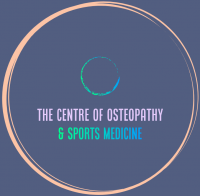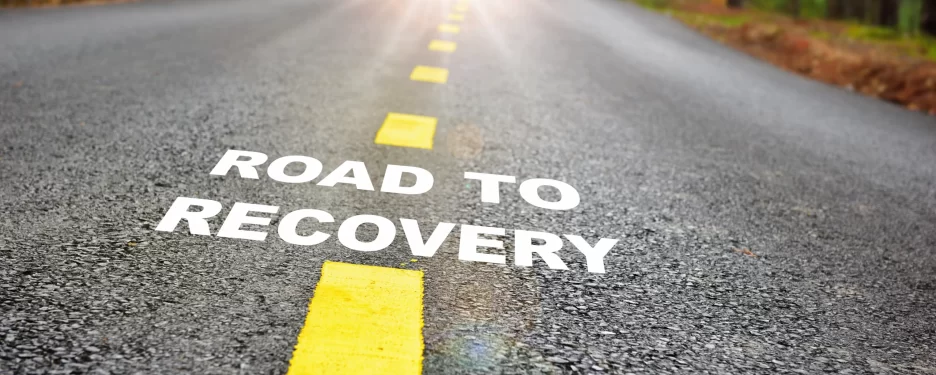Whether you're a professional athlete or just like to stay active for fun, there can be one unwelcome and inevitable issue—sports injuries. From a sprain to a fracture, no one likes to be injured; however, what can you do about it? How should you manage your recovery?
You know that R.I.C.E—rest, ice, compression and elevation—is important, but what comes after? Does the healing phase require any more specific care?
In this article, we'll delve into the importance of assessments and treatments by an osteopath after any kind of sports injury as well as look into shockwave therapy, sports massage and other treatments that could help you get back on your feet in no time! So if you've recently been put out of commission due to sports injuries, let's get started so you can be recovered as soon as possible!
Assessment by an Osteopath After a Sports Injury
When it comes to recovering from a sports injury, it's important to get an assessment from an osteopath as soon as you can. An osteopath will be able to determine the exact nature and severity of your injury, as well as suggest expertise treatments that can help in your healing process.
There are various steps you can take if an osteopath finds that you have sustained a muscle or soft tissue injury, like:
- Shockwave therapy: A mechanical force is applied to the affected area, breaking up scar tissue and helping heal the injured tissue faster.
- Sports massage: A technique used to increase circulation and reduce pain in the affected area.
- Adequate rehab exercises: Strengthening exercises will help with healing and improve range of motion in the affected area.
- Dry needling: An effective treatment using acupuncture needles on trigger points in the body to relieve pain and soreness.
- Cupping therapy: Suction cups are placed over areas of mild tension or tight muscles, creating space within them for better blood flow, resulting in less pain and more mobility.
- Taping: This helps to reduce swelling or bruising by providing support for muscles and ligaments during recovery.
Visiting an osteopath after sustaining a sports injury will help ensure that you are well on your way to recovery!
Benefits of Osteopathy in Sports Injuries
Have you been injured in your sport? If so, it’s important to get it assessed as soon as possible to reduce the risk of further injury and to help you recover quickly. Osteopathy is one of the best solutions for many sports injuries, providing both short-term and long-term benefits.
Osteopathy improves mobility: Osteopathic treatment can help relieve pain, increase range of motion, improve flexibility and balance muscle function in the affected area. It helps restore the affected area’s strength, preventing further injury.
Osteopathy improves tissue elasticity: Treatment helps increase blood flow to the affected area, which improves tissue elasticity and helps reduce inflammation. It also increases collagen production which helps promote tissue healing and regeneration.
Osteopathy is tailored for your specific needs: Osteopathic treatment is tailored for each patient depending on their individual needs. Osteopaths will assess the cause of an injury and then create a personalized treatment plan that focuses on improving overall function while managing short-term pain and discomfort.
Ultimately, osteopathy offers great potential for athletes who have sustained a sports injury. It offers safe, non-invasive solutions that can help them recover faster while preventing future injuries.
How Shockwave Therapy Helps Sports Injury Recovery
Maybe you've heard about shockwave therapy, but you're a bit hesitant to try something so new and unfamiliar. Well, here's the good news: Shockwave therapy is an evidence-based treatment that's used to treat a wide range of musculoskeletal conditions, especially sports injuries.
Shockwave works by sending high-energy sound waves through the skin, into targeted areas of your body. The sound waves stimulate tissue regeneration and repair, which helps reduce pain and improve mobility.
Benefits of shockwave therapy
Here are some of the benefits that you can expect from shockwave therapy:
1. Decreases muscle spasm
2. Breaks up scar tissue
3. Increases blood flow
4. Improves flexibility and range of motion
5. Reduces inflammation
6. Accelerates healing time
Shockwave is often combined with other treatments like rehabilitation exercises and massage to provide maximum benefit for sports injury patients. And because it's non-invasive and drug-free, it's safe for nearly everyone—not just athletes—to use in order to get back onto the field or court quickly and safely after a sports injury.
Rehab Exercises for Injury Management
When it comes to managing a sports-related injury, rehab exercises are essential. Rehab exercises help you regain strength and stability, which can reduce pain and swelling. This also helps support the injured area, so that when you're ready to return to playing your sport, you're not at increased risk for a re-injury.
Types of Rehab Exercises
There are a few different types of rehab exercises that an osteopath might prescribe for you depending on the severity of your injury. These include:
- Isometric exercises – which involve squeezing muscles without moving them.
- Isotonic exercises – which involve stretching and contracting muscles.
- Eccentric exercise – which involve muscle lengthening followed by muscle contraction.
It's important to pay attention to how you feel while doing these exercises, and always take breaks when needed. Doing too much too soon can slow down your recovery, so always listen to your body and don't push yourself beyond what it can handle. Additionally, make sure to work with an osteopath who can advise you on how best to progress with these types of exercises so that they result in the maximum benefit for injury management without causing further damage.
The Role of Sports Massage in Injury Recovery
An effective tool to help your recovery from sports injuries is having a sports massage. A sports massage is designed to reduce tension and improve flexibility by targeting specific muscles, tendons and ligaments that have been strained or stretched due to the injury.
A good sports massage therapist can work on the layers of your muscles, helping with circulation and reducing inflammation in areas that have been damaged. This improves the range of motion, reduces pain levels and helps you heal faster. It also reduces muscle soreness after exercise and increases blood flow, which means more oxygen for your cells which helps them regenerate faster.
Sports massage should be used in combination with other treatments such as shockwave therapy, osteopathy, rehabilitation exercises, dry needling, cupping therapy and taping techniques to get the best possible results. Working with an experienced osteopath is a great way to get a tailored approach to your rehabilitation from sports injuries as they will assess each stage of your recovery.
Other Treatments: Dry Needling, Cupping & Taping
Beyond traditional treatment from an osteopath, there are other rehabilitation treatments that can help you recover fast from a sports injury. Dry needling, cupping therapy, and taping can all help to manage the recovery process.
Dry Needling
This form of therapy is based on acupuncture, with a few modern twists. A qualified practitioner will use a thin needle to target specific tissues and muscles in order to reduce pain, restore mobility and improve performance.
Cupping Therapy
Cupping therapy utilizes glass cups that are placed on the skin, creating suction and pulling the underlying tissue upwards. This helps to relieve pain and relax muscles by increasing blood flow. It's also been known to reduce inflammation and improve circulation.
Taping
Taping is a simple but effective way to stabilize the affected area of injury while providing compression to promote healing. Different types of tape can be used for support and treatment of different injuries. It can also be used for preventative measures for athletes who are prone to injuries in certain areas.
Taken together, these treatments can help you recover faster after an injury so you're back in top shape sooner!
Conclusion
Recovering from a sports injury can be a challenging and daunting process, but it doesn’t have to be! With the right combination of therapies and treatments, you can get back to doing the things you love in no time. Starting with an assessment from an experienced osteopath, then integrating shockwave therapy, sports massage, and adequate rehabilitation exercises into your post-injury recovery plan can all aid in the healing process. Plus, some alternative therapies like dry needling, cupping therapy, and taping are excellent tools to help you achieve your desired outcomes. So, don’t hesitate to seek our help if you’ve suffered a sports-related injury - you’ll be thankful you did!

